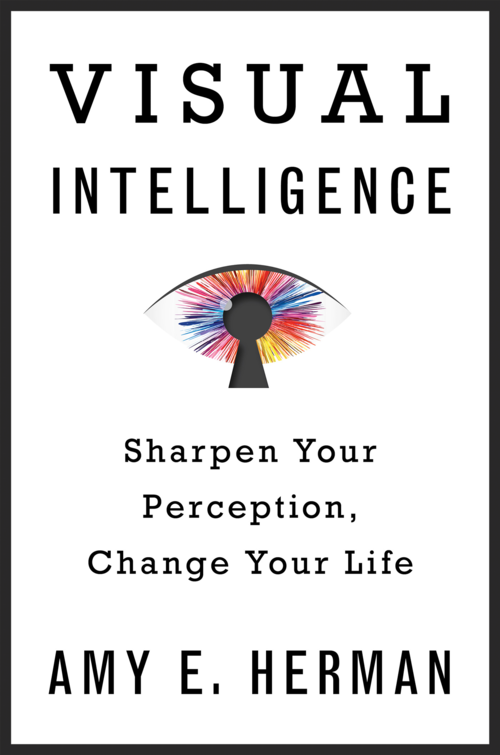What We're Reading Now
Observing Art for Better Communication
2 December 2016
Eden read Visual Intelligence by Amy Herman and was happy to see so many communication tools in a book about what and how we see.
Tags: books, communication, eden read, empathy, observation
Amy Herman is an art historian, attorney, and the creator of a class called the Art of Perception that helps clients, including the FBI and NYPD, develop their skills of observation by going to museums and studying art. In her book, Visual Intelligence, you’ll find the same artwork that Herman uses in her classes accompanied by a collection of stories that demonstrate the importance of having sharp observational skills. I expected her book to read like an adult Where’s Waldo; it doesn’t. Instead, this book about noticing details includes practical advice related to problem solving, empathy, and communication. If you’re looking to develop or practice any of these skills, you might try following some of Herman’s advice.
Lesson 1: Look at the artwork from different perspectives.
Some of the paintings in Visual Intelligence appear at first glance to be either abstract or straightforward. However, I learned that reading a hint from the author or changing the angle from which I viewed the image often changed the way I saw the entire picture. Herman applies this tactic of turning what you see upside down to communication practices and situations of conflict. She advises the reader to practice empathy by restating the situation from the opposite point of view. To give you a better idea of how challenging this can be, Herman leaves readers with the following advice from philosopher Daniel Dennett: “You should attempt to re-express your target’s position so clearly, vividly, and fairly that your target says, ‘Thanks, I wish I’d thought of putting it that way.’” Seeing a situation from someone else’s point of view takes practice, but once you’ve stepped into his or her shoes, it’s hard to unsee the picture from the new perspective.

Lesson 2: Use specific language.
Herman asserts that when describing art, vague language is not merely unspecific; it is actively unhelpful. It’s easy to describe a painting as colorful, boring, busy, or weird. However, if I used any of these words to describe a painting to someone who had not seen it, the listener would have no idea what the painting actually looked like. In the same way, using general words like good, bad, or lazy to give feedback does not describe behavior in a way that benefits the recipient. Generalizations leave both competencies and shortcomings open to interpretation, which inhibits constructive communication. An example of this would be saying that someone “was rude” when it would be more accurate to say, “She raised her voice.” Specific language helps us to remove ambiguity and subjectivity from our everyday lives while painting a clearer picture for our listeners.
Lesson 3: Don’t let the paint dry.
The last piece of advice comes from artists in general: “When you make a mistake, don’t let the paint dry.” Unfortunately, even when we choose our words carefully, miscommunication can still occur. However, we often settle for communication errors and avoid the awkwardness of clarification when it would be more beneficial for us to quickly correct the communication mistake. Next time you find yourself in the middle of a communication error, try to correct the mistake as quickly as possible, before the words have the chance to settle.
Throughout Visual Intelligence, Herman has the reader repeat a simple exercise: look at a piece of artwork without context of title, artist, or time period, and describe what you see. After reading the book, I learned that I am not as good at noticing details as I thought I was, but that’s okay because observation, like communication, takes practice. If you’d like to practice your own observation skills, you can take Herman’s Visual Intelligence Test. I’ll go ahead and ask you the first question: Without looking, do you know in which hand the Statue of Liberty holds her torch?







Comments
Our Comment Policy:
Our blog posts are only half of the conversation. What our readers have to say is equally important to us, and we're grateful for all the comments that continue the dialog.
To ensure that the discussion here is as useful as possible to all of our readers, please be respectful of our contributors and refrain from harassing, threatening and/or vulgar language. We reserve the right to screen and remove any comments from the site. If you have a question about a comment or want to discuss our policy, please contact us. We'll talk it over.
There are no comments for this entry yet.